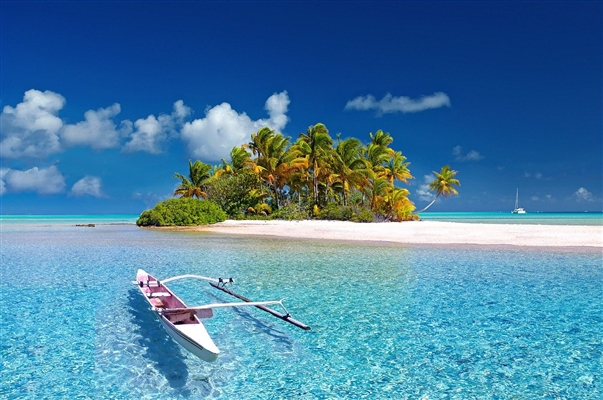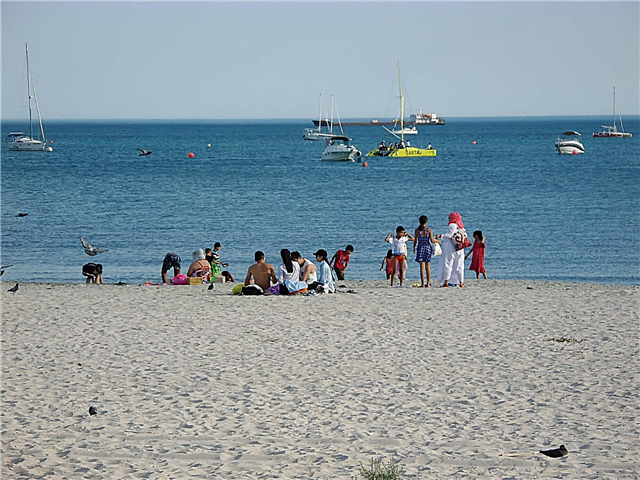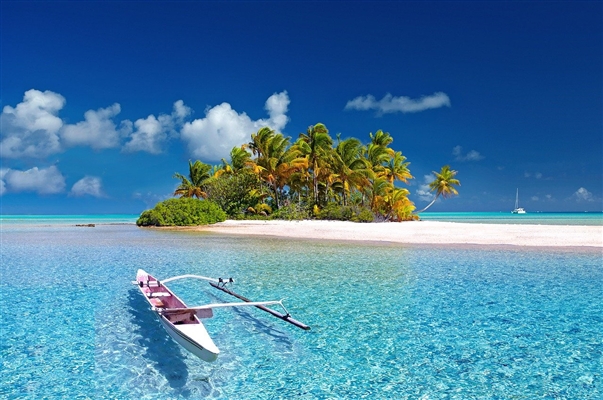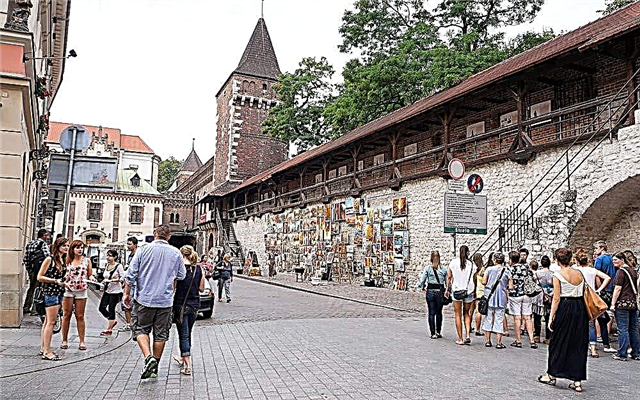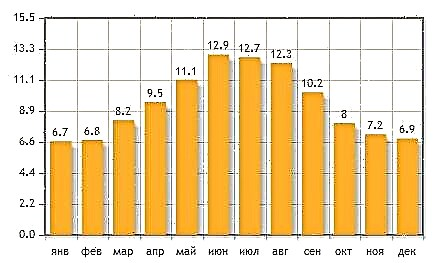Over the past decade, the country's authorities have been trying to create a special economic zone on the territory of Buryatia with a focus on tourism. This became the reason for the inflow of capital into the region and the development of the industry. Popular routes received more publicity and visitors to the region learned about local attractions.
The total number of museums in the republic has long exceeded one hundred. But the main values remain natural beauty and iconic places associated with the indigenous peoples of Buryatia. Lake Baikal stands out on this list. It is a symbol not only of the region, but of the whole of Russia. Reserves, waterfalls, datsans, resort areas, monasteries and much more - this is what a traveler who finds himself in such a remarkable land has to see.
The most interesting and beautiful places in Buryatia
List, photos with names and descriptions of popular attractions!
Lake Baikal
The deepest on the planet. The largest natural freshwater reservoir. The area is about thirty-two thousand square kilometers. The flora and fauna in and around the lake are unique in many ways. For several months Baikal is covered with ice almost completely. The bottom is embossed with depressions and gambling ridges, so the depth is changeable here. There are twenty-seven islands on the lake.

Baikal State Reserve
Founded in 1969. Occupies an area exceeding one hundred and sixty thousand hectares. Created to preserve the unique nature of Lake Baikal and its unique ecosystem. The reserve includes an ethno-town and a nature museum. Part of the territory is inaccessible to tourists and is specially protected. Some plants and fauna are listed in the Red Book.

Ivolginsky datsan
Founded in 1945. Located in Upper Ivolga. Its appearance is associated with the revival of Buddhist culture in the region. Since 2002, the imperishable body of Khambo Lama Itigelov has been kept here. A separate temple was built for him. The territory of the monastery is densely built up and vast. Several temples, residences, utility rooms, a greenhouse, a university and so on - all this is stylistically combined into a single complex.

Tunkinsky National Park
Year of foundation - 1991. Occupies an area exceeding eleven thousand square kilometers. The purpose of creation is to protect unique local ecosystems. They are different here: from the tundra to the steppes. Munku-Sardyk, the highest peak of the Sayan Mountains, is also a part of the national park. There are many representatives of the fauna both by species and by the number of specific groups. The flora is slightly less diverse, but rich in rarities.

Barguzin valley
Located between two ridges: Barguzinsky and Ikatsky. The territory is divided into taiga, desert and tundra. Most of the time there are strong winds, which is associated with the legend of two warrior friends. In the vicinity there are separate attractions: the Ininsky rock garden with boulders up to four meters in diameter, the Barguzin river, Bukhe-Shulun (Bull-stone), almost one and a half hundred mineral springs, and so on.

Valley of Shumak springs
Located by the river of the same name. The height above sea level exceeds one and a half thousand meters. Here is a special type of water that is not found anywhere else on the planet. The springs are divided into three lines: each has its own set of minerals and is suitable for the treatment of certain diseases. Since 2006, a camp site has been operating nearby with all the necessary attributes of civilization: from round-the-clock lighting to the Internet.

Ethnographic Museum of the Peoples of Transbaikalia
Founded in 1973. Covering an area of thirty-seven hectares, it is one of the largest open-air museums in the country. It is based on almost forty architectural monuments, as well as about eleven thousand other exhibits. The collection is divided into complexes representing different styles and historical layers. The great event of the museum is the celebration of Shrovetide.

Arshan hydrotherapy resort
It is located in the center of the Tunkinskaya valley on the banks of the mountain Kyngarga. Local sources are as useful as well-known brands. The minerals contained in the water are good for digestion, and the shower helps with neuroses and heart problems. Arshan is also famous for the dishes of the Buryat cuisine, which are served here everywhere. Arshansky datsan, Kyngargi waterfalls, the peak of Love are the main attractions.

Cascade of waterfalls on the Kyngarga river
They are located in the marble canyon. Researchers do not give an unambiguous answer about the number of waterfalls in the cascade, since they are classified in different ways. For this reason, the data varies: from twelve to twenty. This natural splendor is located near Arshan. You can get here along a well-marked path. The highest waterfall has an extreme point at a distance of ten meters from its base.

Valley of Extinct Volcanoes (Khi-Gol Pad)
Located by the river of the same name. The territory, like part of the river bottom, is covered with solidified lava. Located at the junction of two ranges of the Eastern Sayan. Three extinct volcanoes stand at the top of the natural monument. The total length of the valley is about twenty kilometers. The height of the territory above sea level fluctuates, but does not fall below one thousand six hundred meters.

Dzherginsky reserve
Founded in 1992. Before that, there was a reserve here since the 70s. Occupies an area of two hundred and thirty-eight hectares. It is located in the Kurumkan region at the junction of three mountain ranges. Most of the forests are deciduous. The flora is quite diverse, the fauna is represented by a much smaller number of species. One of the rarest inhabitants is the reindeer.

Baikal-Amur Mainline
Opened in 1938. Some sections were put into operation much later. The length exceeds three thousand eight hundred kilometers. BAM is working at the limit of its capabilities, cargo traffic is constantly increasing, therefore, various projects for the modernization of the highway are being developed. The terrain along which the BAM passes is heterogeneous, in places severe. The road is of strategic importance.

Small Zhom-Bolok
Located on the river of the same name. Its height is over twenty meters. There is an observation deck at the top, partly fenced off for safety. Downstairs there are cabanas for changing clothes if someone wants to plunge into the water. The area is associated with many legends and is revered by the inhabitants. For the period of cold weather, the waterfall completely freezes. This makes it even more attractive to tourists.

Sable lakes
In fact, this is one freshwater lake, divided by a channel. However, it is often mentioned in the plural. Reservoirs are named as well as Big and Small. The total area exceeds one square kilometer. The average depth is about fifty meters. The Skazka waterfall, twenty meters high, is located nearby - another notable point of the tourist route.

Suva Saxon Castle
Located near the village of Suvo. Here, on an almost bare hill, completely devoid of vegetation, there are heaps of bizarre stones. They cover an area of about half a square kilometer and look impressive, both up close and from afar. Locals believe that one of the last outposts of the ancient people was located here. An excellent view of the valley opens from the highest point.

Atsagatsky datsan
Founded in 1825, closed in 1936. In the early 90s, they began to restore it, only in a new place with the blessing of the XIV Dalai Lama, who visited these parts. The slope of the Tamkhityn daba mountain became a new place for the location of the shrine. There are additional buildings on the territory: Tsogchen-dugan, stupa, Buddha statues. Some time later, a museum named after the Buryat Lama Aghvan Dorzhiev was opened nearby.

Tamchinsky datsan
Founded in 1741. Located in the village of Goose Lake. In the 30s of the last century it was closed, in the 90s it began to be restored with the blessing of the Dalai Lama, received a number of new buildings and is currently a functioning monastery. On its territory is the Altan-Serge deer stone - a unique archaeological monument, which, according to researchers, is about five thousand years old.

Egituysky datsan
Founded in the 20s of the last century. It was closed just over a hundred years later, in 1991 the process of restoration of the monastery began. The main shrine is Sandal Buddha (Zandan Zhuu). This is the only lifetime statue of the founder of Buddhism. It is a particularly revered relic for all adherents of religion. Datsan includes a number of buildings, both religious and economic.

Sartul-Gegatuysky datsan
Founded in 1804. Located in the Dzhida region. Updated several times. The changes concerned not only the external appearance, but also the interior decoration. New faculties were also opened, which made education here more extensive than in neighboring datsans. In the 30s of the last century, it was destroyed and plundered. Now it has been restored, a center for oriental medicine has been built nearby.

Selenga river
The length is more than a kilometer. Its source is at the confluence of the Ider and Delger-Muren rivers. And the mouth is Baikal. In the past, it has spilled so many times that floods have occurred in the area. Among the nearby attractions are burials from the Mongol period and monuments to the Xiongnu. It is located not only in Buryatia, but also in Mongolia.

Sarma gorge
Located in the Maloye More area. The stream flowing here is quite turbulent, it carries its waters into the picturesque valley. The wind can be considered a separate attraction of the area - it is so unusual and powerful. On the right bank of the mountain river passing through the gorge, you can find rock paintings. There are many legends and stories about the area, including the Cossacks' journey here in the middle of the 17th century.

Sretensky monastery
Founded in 2000. It is the only nunnery in Buryatia. It was built next to the site where an Orthodox church had stood since the beginning of the 19th century. It has experienced many dark moments in history, including the closure after the revolution. The building subsequently changed several purposes. After returning to the ROC, there was a complete restoration of the church and the courtyard.

Selenginsky monastery
It was first mentioned in the 17th century. Located in the village of Troitskoye. It was closed after the revolution and rebuilt in the early 2000s. During the period when the monastery was not active, there was a psychiatric hospital within its walls. Almost all the surviving buildings belong to architectural monuments; now the ensemble has already been supplemented with new buildings and outbuildings.

Ambassadorial Spaso-Preobrazhensky Monastery
Founded in 1681. Closed in the 20s of the last century. The revival took place in the early 2000s. It is an architectural monument, and one of the oldest in Transbaikalia. The restoration work before the new opening even affected the replacement of the bells. Inside there are relics that are important for all Orthodox Christians - unique icons with particles of the relics of saints and martyrs.

Museum of the History of Buryatia
Founded in 1923. Located in Ulan-Ude. The museum's collections are vast and divided into groups according to class, time span, ethnicity, and more. The funds and permanent exposition present: paintings, archaeological finds, objects and cultures of small nations, numismatics, religious artifacts, rare photographs, rare books and much more.

Triumphal Arch "Royal Gate"
Built in 1891 for the arrival of the Tsarevich, who later became Emperor Nicholas II. It was partially dismantled, and then demolished in 1936. In 2006, for the anniversary of Ulan-Ude, it was restored. The appearance and some features of the structure were preserved, but the size of the arch changed: it became larger. In addition, a commemorative inscription dedicated to the original design appeared on it.

Monument to Lenin in Ulan-Ude
Installed in the early 70s of the last century. It is a huge head of the leader of the proletariat on a pedestal. Turned to face the Soviet Square and the back of the head to the administration building. It is the largest sculpture of Lenin's head in the world. Several urban legends are associated with the monument, both about the installation itself and about the existing traditions associated with it.

Burin-Khan
The mountain is one of the five most revered shrines of Buddhism. There is a five and a half meters high sculpture installed here: a rider on a horse, personifying the spirit of the mountain. A dugan was also built on the top, there are other small buildings, as well as observation platforms. Legends and beliefs are associated with the area, rituals have been held here since ancient times, people came here to ask for advice and to achieve enlightenment.

Slyudyanskie lakes
They are located near Baikal. The Big Lake occupies two hundred hectares, the Small Lake - forty. It is also less deep: three meters versus twenty for a neighbor. Both are rounded and separated by oblique pebbles. Tourists come here not only to admire the nature, but also to relax, as the beaches of the lakes, covered with sand, are perfect for a leisurely pastime in good weather.

Old Believers of Transbaikalia (Tarbagatai)
They were exiled to this area in the 18th century. They adhered to bezopovschina and carried out their rituals. Their cuisine was also different, where a large amount of meat prevailed. The attitude towards the gentiles is complex, a number of prohibitions on communication were introduced. There were two waves of closure of their churches: in the 30s and 60s of the last century. Families were large, and there was always a man at the head. Now there is a museum of Old Believer culture in Tarbagatai.


